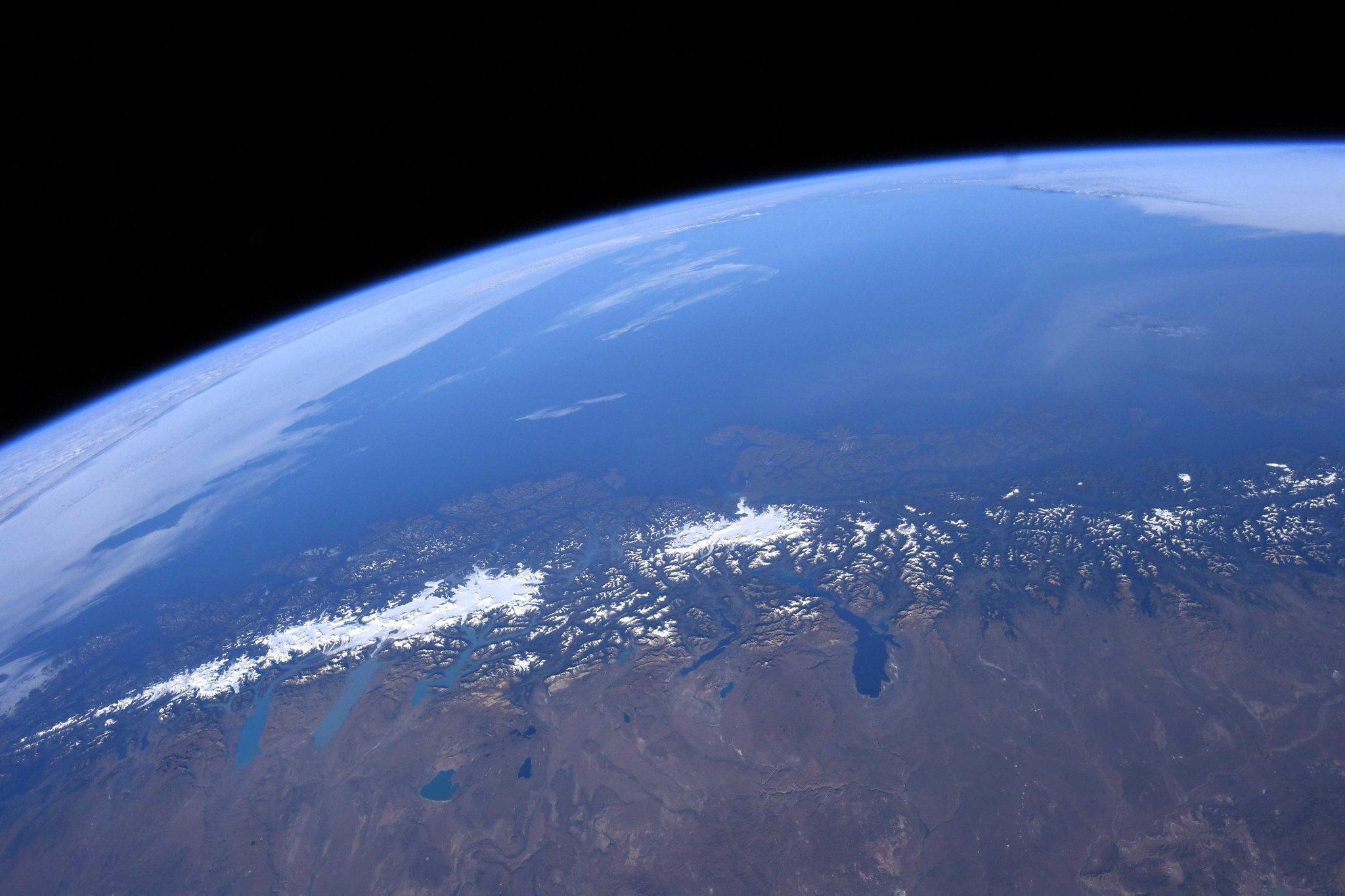[:ja]デービッド・サンジャック宇宙飛行士がISSから撮影した南米チリの氷河です。

南パタゴニア氷原から連なる氷河の数は大小50以上、その規模は、南極、グリーンランドに次ぐ量といわれており、氷河はパタゴニアの特徴とまで言われています。パタゴニアの氷河は温暖氷河に属し、アンデス山脈に降る多量の雨により涵養されます。非常に速く氷河が循環することで知られており、平均年間に100mから200m移動します。
地上の様子はこちらです。

参考文献: David Saint-Jacques’s Tweet
地球俯瞰画像を見る: LiVEARTH
[Earthview Wonders] No.755: Chilean Glaciers
Astronaut David Saint-Jacques captured from ISS Chilean Glaciers.

Patagonia is a sparsely populated region located at the southern end of South America, shared by Argentina and Chile. The region comprises the southern section of the Andes mountains as well as the deserts, pampas and grasslands east of this southern portion of the Andes. The high rainfall against the western Andes (Wet Andes) and the low sea surface temperatures offshore give rise to cold and humid air masses, contributing to the ice-fields and glaciers, the largest ice-fields in the Southern hemisphere outside of Antarctica.
The local scenery on the ground is as follows.

Reference: David Saint-Jacques’s Tweet
See earthview photo gallery: LiVEARTH[:en][Earthview Wonders] No.755: Chilean Glaciers
Astronaut David Saint-Jacques captured from ISS Chilean Glaciers.

Patagonia is a sparsely populated region located at the southern end of South America, shared by Argentina and Chile. The region comprises the southern section of the Andes mountains as well as the deserts, pampas and grasslands east of this southern portion of the Andes. The high rainfall against the western Andes (Wet Andes) and the low sea surface temperatures offshore give rise to cold and humid air masses, contributing to the ice-fields and glaciers, the largest ice-fields in the Southern hemisphere outside of Antarctica.
The local scenery on the ground is as follows.

Reference: David Saint-Jacques’s Tweet
See earthview photo gallery: LiVEARTH[:]